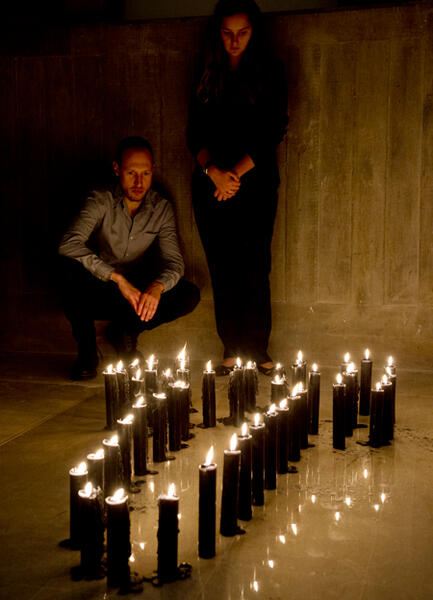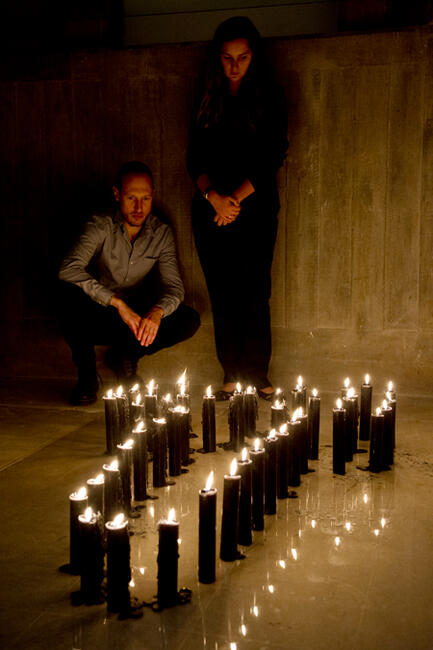Ana Mendieta
Hayward Gallery, London
Hayward Gallery, London, is presenting the first retrospective of the Cuban artist Ana Mendieta.

During her short but prolific career, Mendieta (Havana 1948-New York 1985) developed a unique, intimate and devastating visual language. The work of this painter, sculptress, video-artist and performer was always linked to her personal life. Her forced departure from Cuba to the United States when she was twelve years old, and the time she spent in different institutions devoted to temporary adoption marked an artistic trajectory always focused on subjects such as identity, violence towards women, displacement or transcendence. Mendieta used her own body together with elemental materials such as blood, earth, water and fire, to produce performative actions in an intense search for a symbiosis with nature, a fusion of performance and body art, the so-called “earth-body” sculptures, a dialogue between the landscape and the female body that characterizes her entire production. The artist herself described her work as an art “grounded on the belief in one universal energy which runs through everything," Her tragic and premature death cut short a visionary career inspired by love of life, political commitment, and her fight the migrated female body in search of its origins.
The exhibition reconstructs a chronology of different stages in the artist’s career, her most significant documentary testimonies with a crude visual content. From the early performances in which she appears naked, her face pressed against glass to distort her features ( Glass on Body 1972), her body spattered with blood after being supposedly raped ( Rape Scene 1973), or after having sacrificed a hen ( Death of a Chicken 1972), to the body that attempts transvestism when she transfers a fellow student’s beard to her face ( Facial Hair Transplant 1972).In this latter work Mendieta generates an image that involves gender bending and a political questioning of the roles attributed to women by a patriarchal society, a symbol adopted by some contemporary trans feminists.
Mendieta uses blood assigning to it a ritual meaning. Inspired both by the Yoruba “santería” practiced in Cuba and by the cathartic performances of the Viennese Actionists, the artist attributed to this fluid a powerful and magical strength. The female body presented in Mendieta’s production is intimately related to two notions which are inseparable in her work: those of life and death.
Faced with the prohibition to return to her native Cuba, Mendieta discovered in Mexico her spiritual Latino roots. In natural environments in that country she developed most of her Silueta series (1973-1980), utilizing nature as her canvas and her medium. The artist used her body to create silhouettes in open spaces. Most of her works were produced in remote places and were ephemeral creations. She only exhibited the photographic representation, which is what is being shown in the present retrospective. Photographs were the link chosen to convey to the public her mystic-artistic liturgy. One of her most poetic pieces, Entierro del Ñañigo. Ñañigo Burial (1976) ̶ which takes its title from the popular name of an Afro-Cuban religious brotherhood ̶ is a floor installation of black candles outlining the contour of the artist’s naked body. Through these works, which cross the borders between performance, film and photography, Mendieta explored her relationship with place, as well as a major relationship with the Mother Earth or the figure of the Great Goddess.
The exhibition, impeccably curated by Stephanie Rosenthal, also showcases hundreds of documents, contacts, notes and slides that complete the approach to her creative processes. Traces reveals the unique practice of a creator who was ahead of her time, and who succeeded in combining facets associated to such hot issues as gender, otherness, or ecology. This exhibit represents the recognition in the United Kingdom of Ana Mendieta as an influential figure in art history, offering a unique opportunity to appreciate the legacy of her work.





